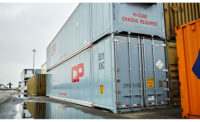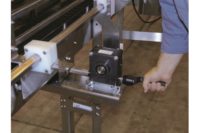On the Right Track
By Sam Gazdziak, Senior editor
The meat industry has been responding to increased demands of more traceability of product throughout the supply chain.
Recalls have become a regular news item within the last few months. Whether it’s hamburgers or children’s toys, many products have been taken off store shelves, and those stories have raised interest in how products are tracked throughout the distribution chain. Not only do consumers want to make sure that products are safety handled from one location to the next, but retailers also want to make sure that every piece of product can be accurately traced from shipping to its final destination.
The focus may be on products as a result of recent recalls, but the trend toward traceability is not a new one. “I would definitely say it’s something that’s been building over the years,” says Bucky Gwartney, executive director of product enhancement research for the National Cattlemen’s Beef Association. “Look at something like country-of-origin labeling. Look at what we call ‘story beef,’ where customers want to know where their beef comes from.”
Gwartney points to the success of products that are labeled as U.S. Department of Agriculture-certified natural or organic as further evidence. Although they are not traceability programs, they show that consumers have an interest in what is in the products and where they are coming from.
The demand for increased traceability stems from the retailers. Wal-Mart, for example, has asked all vendors to bar-code and use RFID (radio frequency identification) tags on pallets of products, so that they can be traced throughout the system. “As that grows and becomes more universal, I think that’s where you’ll start to see individual products with more traceability,” Gwartney says. Currently, he says that the meat-processing industry has done a good job of using lotting and code dating, as well as other methods, to track bulk products back to production, getting complete information on an individual package of product is still a ways off.
Getting full traceability on a per-package basis is being done on a brand-by-brand basis, he notes. However, while some companies are able to trace a packaged meat product back to a specific carcass, he says, “it’s logistically very tough to do when you’re talking about the volumes of some of the products that are fabricated. It’s one of those things that [is] doable but would add significant cost to the system, and to do it on these volumes would be a big challenge.”
The two main methods to track products throughout the supply chain are bar-coding and RFID tags, Gwartney says. These two systems have proven to be very popular. In the case of the RFID system, the cost of tags has decreased, making it a more cost-effective tracking system than it has been in the past. There are other systems that have been developed, but nothing else has managed to make its way into the mainstream as those two systems have. Gwartney says that there is the possibility that DNA traceability may become a viable solution as well. That system involves gathering the necessary information from a DNA sample of the product. Currently, there are cost and application issues that are keeping it from being more widely used, he says.
The NCBA’s role in traceability is to ensure that the systems that are put in place for traceability are cost-effective, usable and reasonable systems, Gwartney says. The association includes many members who are actively involved with the system. “We’re making sure we know what’s going on and that our members and consumers and everyone in between gets a good system that everybody wants,” he says.

